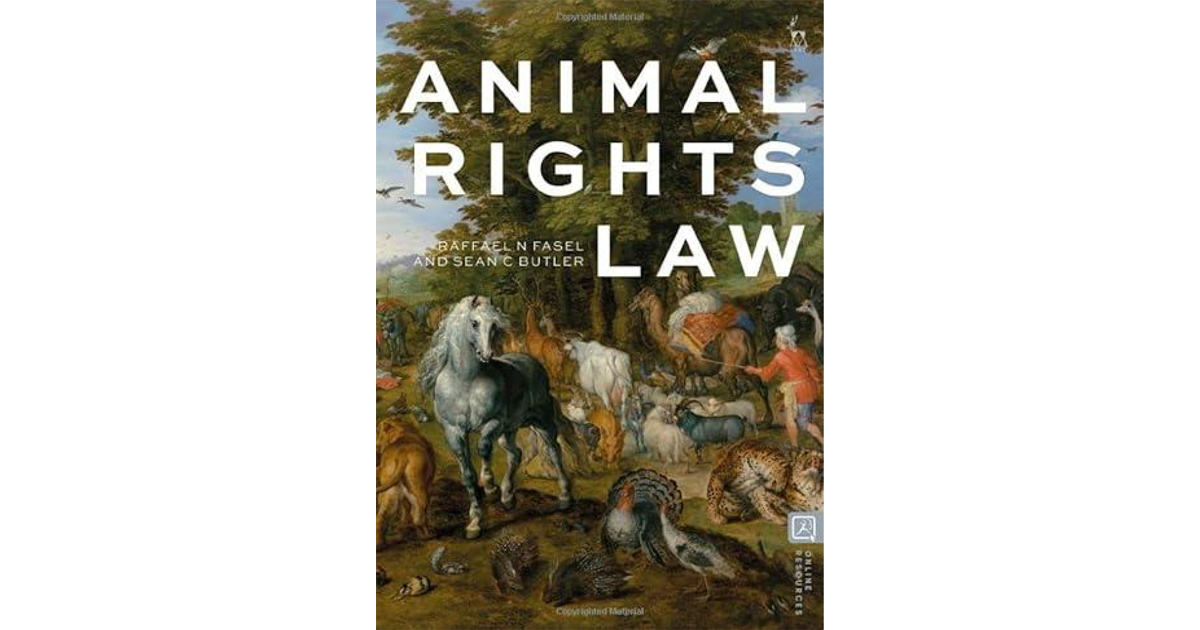
Nov 02, 2023 Book Review: Animal Rights Law
Authors: Raffael Fasel & Sean Butler (Bloomsbury Publishing)
The publication of Peter Singer’s Animal Liberation in 1975 led to the development of the modern animal rights movement. (Animal Liberation Now is the 2023 edition). One feature of this new social movement was the development of various new professional organizations (e.g., scientists, psychologists, veterinarians, and lawyers) that focused on animal rights. The lawyers launched their organization – Attorneys for Animal Rights – in 1979 but soon changed the name to the Animal Legal Defense Fund because, I was told, donors were reluctant to send money to an association of attorneys!
The Animal Legal Defense Fund (ALDF) encouraged the development of student societies at US law schools. Within a decade of founding the ALDF, the first animal law course was offered (at Pace University in New York State in 1988). Today, according to Fasel and Butler, over 200 law schools offer studies in animal law worldwide. In the USA, many programs were started in part because the television game show host Bob Barker distributed millions of dollars to some of the top law schools in the country to launch animal law courses.
Despite the proliferation of animal law programs, no formal textbooks supported these animal law courses. Fasel and Butler, both at the Cambridge Centre for Animal Rights Law, set out to remedy this lack. They have produced an accessible and comprehensive text covering animals’ current national and international legal status under several legal traditions. The text also includes an examination of different philosophical positions on the moral status of animals and a substantive discussion examining the strategies of welfarism versus abolitionism – an issue first raised by law professor Gary Francione at Rutgers University and explored in detail in a back-and-forth discussion between Francione and British political scientist Robert Garner in a 2010 book, “The Animal Rights Debate: Abolition versus Regulation.”
Lawyer Yolanda Eisenstein comments on the Francione-Garner book in a Texas State Bar newsletter. She notes that Francione argues “that virtually no progress has been made in animal protection and that time and money would have been better spent over the past twenty years on vegan education.” It may be true that there has been little progress in providing animals with legal protections against their use, killing, and consumption by humans, but there are some areas where animals may be better off now than they were fifty years ago. For example, the number of animals used in laboratories peaked in many countries in the mid-1970s and is now around half what it was (in some cases, one-quarter of what it was) in 1975. The number of healthy but “unwanted” dogs and cats euthanized by animal shelters in the United States has fallen by over 90% since the mid-1970s. However, meat consumption globally has tripled over the past fifty years, although there are signs that such consumption may fall in many developed countries.
It is not immediately apparent why the book devotes so much attention to the welfarism versus abolition issue. However, treating animals simply as property in many legal traditions is a substantial obstacle to raising the legal status of animals. The welfarism versus abolition debate may provide a valuable heuristic to examine the appropriate legal status of animals.
The book is supported by many online resources on the publisher’s website. For example, the additional resources for Chapter 3 (philosophical foundations of animal rights) include extensive links to how different religious and cultural traditions address the moral status of animals. There are links to over twenty academic journals, including eleven specifically covering animal law and nine interdisciplinary journals, and to relevant legal resources in 39 countries and four world regions.
The book and the associated website are a marvelous resource that should keep any student of the animal movement fruitfully engaged for months!


